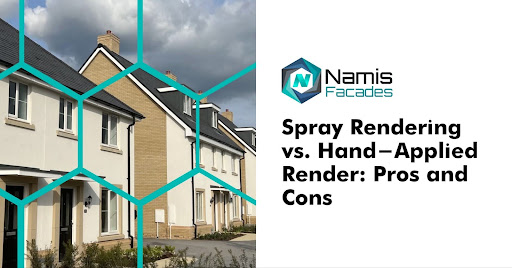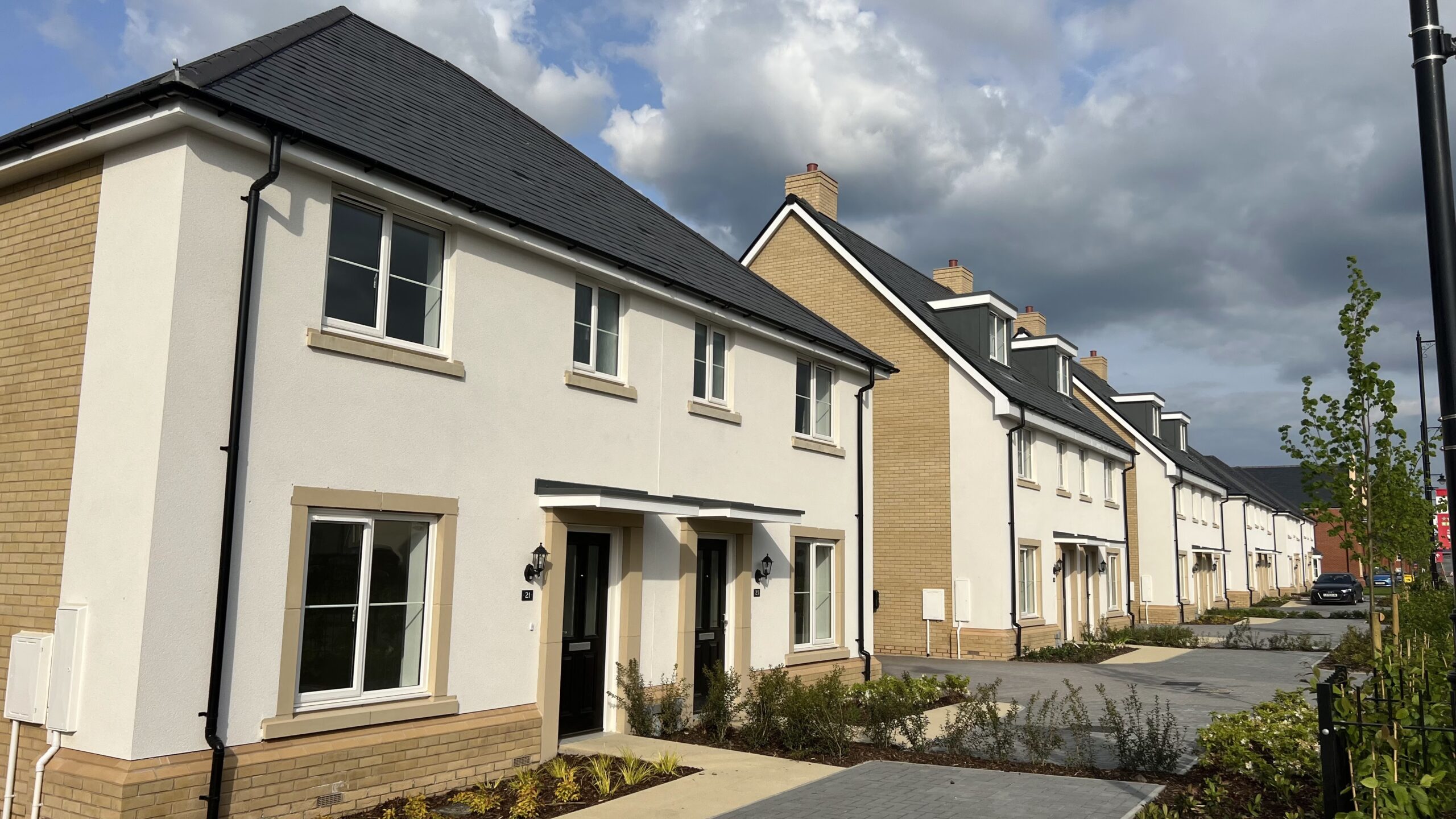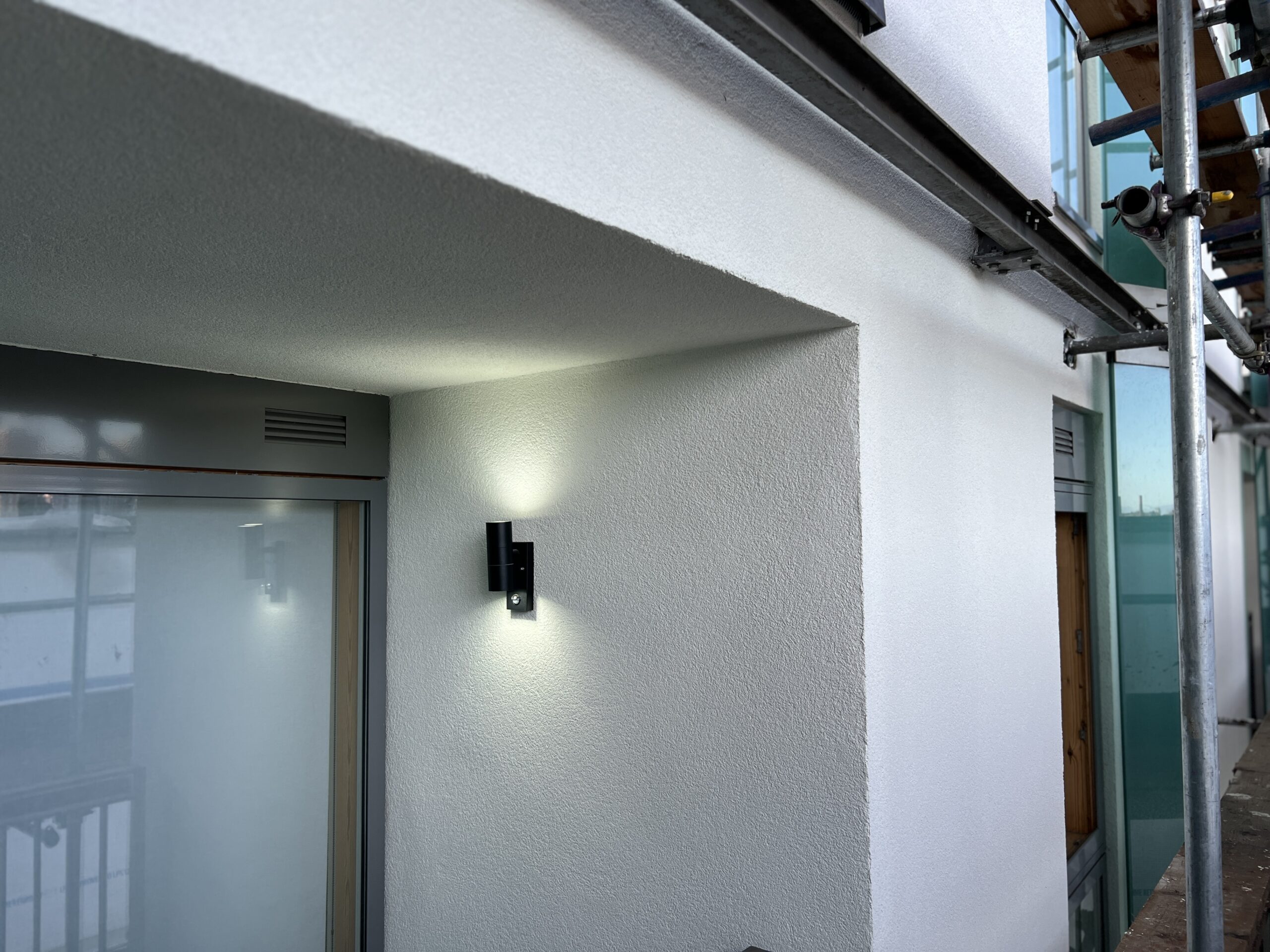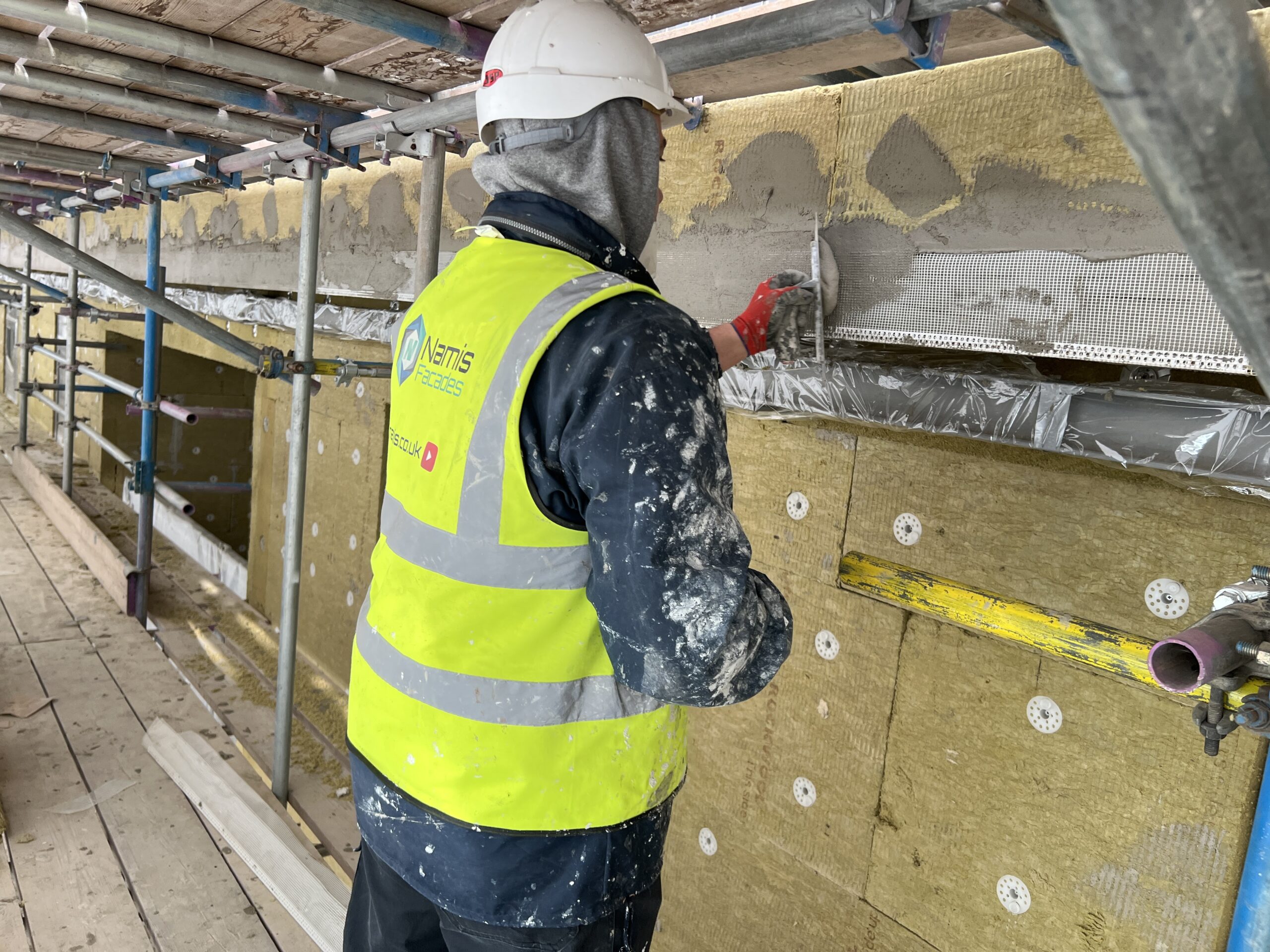Rendering is an important technique in construction that protects buildings and makes them look nice. At Namis Facades, we use different ways to render buildings, including spray rendering and hand-applied render. This article will explain the good and bad points of each method to help you choose the right one for your building project. We’ll look at things like how fast they are, how much they cost, and what types of buildings they work best for.
Key Takeaways
| Aspect | Spray Rendering | Hand-Applied Render |
|---|---|---|
| Speed | Faster, especially for large areas | Slower, more time-consuming |
| Consistency | Highly uniform finish | Can vary based on applicator skill |
| Initial Cost | Higher equipment investment | Lower startup costs |
| Skill Required | Specialized equipment knowledge | Traditional plastering skills |
| Best Suited For | Large commercial projects | Smaller, detailed work |
Understanding Rendering Techniques
Rendering is putting a protective layer on the outside of buildings. It’s usually made from a mix of cement, sand, lime, and water. This layer makes buildings look better, keeps them strong, and helps them stay warm or cool. Nowadays, people add special ingredients to make the render last longer, keep water out better, and be more flexible for different weather conditions and building styles.
At Namis Facades, we offer monocouche spray rendering and traditional hand-applied rendering. Each method has good and bad points, which we’ll explain. We know how to use both methods well, so we can choose the best one for each project, whether it’s a new office building or fixing up an old house.
Spray Rendering: The Modern Approach
Spray rendering uses special machines to put render on buildings quickly and evenly. It’s become popular for big projects. The machines have gotten better over time, allowing workers to control the spray precisely and use different types of render, including new kinds with special ingredients.
Advantages of Spray Rendering
- Speed: It’s much faster than doing it by hand, especially for big areas. It can cut the time a project takes by half.
- Consistency: The machine makes sure the render is the same thickness and texture everywhere. This looks really good on big, flat walls.
- Labor Efficiency: You need fewer workers to cover big areas, which can save money.
- Versatility: It works with different types of render, so you can choose the best one for each project.
- Reduced Material Waste: The machine can be set to use just the right amount of render, so less gets wasted.
Considerations for Spray Rendering
While spray rendering has many good points, there are some things to think about:
- Initial Investment: The machines are expensive, which might affect the project’s budget.
- Specialized Skills: Workers need special training to use the machines properly.
- Overspray: On windy days, the spray might go where it’s not supposed to.
- Surface Preparation: The wall needs to be prepared well before spraying.
- Environmental Considerations: The machines use more energy than hand tools, but they might waste less material overall.
At Namis Facades, our team knows how to use spray rendering machines really well. We always get new equipment and learn new things to do the best job possible.
Hand-Applied Render: The Traditional Method
Hand-applied rendering is the old-fashioned way of putting render on buildings. Workers use tools like trowels to spread the render by hand. This method is still good for some projects, especially when you need to be very careful or work on old buildings.
Advantages of Hand-Applied Render
- Precision: Workers can be very careful and do detailed work, especially on fancy parts of buildings.
- Flexibility: It’s easier to change how you’re working as you go along.
- Lower Initial Costs: You don’t need expensive machines to start.
- Suitable for Small Areas: It’s good for fixing small parts or working in tight spaces.
- Traditional Aesthetics: It can make old buildings look authentic.
Considerations for Hand-Applied Render
Hand-applied rendering has some challenges too:
- Time-Consuming: It takes longer to cover big areas compared to spray rendering.
- Labor Intensive: Workers have to work harder physically.
- Skill Dependent: The quality depends a lot on how good the workers are.
- Consistency Challenges: It can be hard to make everything look exactly the same across big walls.
- Weather Sensitivity: The weather can affect the work more because it takes longer to apply.
Our team at Namis Facades is good at both new and old rendering methods. We look at each project carefully to decide which method is best, thinking about what kind of building it is, what the customer wants, and what the project needs.
Comparing Spray Rendering and Hand-Applied Render
Let’s compare these two methods to help you decide which is best:
Application Speed and Efficiency
Spray rendering is much faster for big areas. A team with spray equipment might cover 200-300 square meters in a day, while hand application might only cover 50-100 square meters. But for small jobs or detailed work, hand application might be quicker because you don’t need to set up big machines.
Quality and Consistency of Finish
Spray rendering usually makes walls look more even, especially on big, flat surfaces. This is good for modern buildings that want smooth walls. Hand-applied render is better for detailed work and can create special textures that machines can’t. It’s great for old buildings or ones with fancy designs.
Cost Considerations
Spray rendering machines cost a lot at first, but they can save money on big projects because they work faster. A good spray machine can cost £5,000 to £20,000. Hand-applied rendering doesn’t need expensive equipment, but it takes more time, so you might have to pay workers more. For a normal house, hand application might cost 20-30% more in worker pay than spray application.
Suitability for Different Project Scales
Spray rendering works best for big projects like apartment buildings or office blocks where you need to cover large areas quickly. Hand-applied render is better for smaller houses, fixing up old buildings, or working on parts of buildings with complicated designs.
Choosing the Right Method for Your Project
To pick the best rendering method, think about:
- Project Size: Big projects usually benefit more from spray rendering.
- Budget: Think about both the cost of equipment and how much you’ll pay workers over time.
- Desired Finish: Spray rendering is good for smooth, modern looks. Hand application is better for textured or traditional styles.
- Building Type: Old buildings or ones with fancy details might need hand-applied techniques.
- Timeline: If you need to finish quickly, spray rendering might be better.
- Environmental Factors: Think about the weather where you’re working. Spray rendering might be less affected by wind and temperature.
Conclusion: The Namis Facades Approach
At Namis Facades, we know every project is different. We’re good at both spray rendering and hand-applied techniques, so we can choose the best way for your project. Whether you’re building a big office or fixing up a small house, we have the skills to do a great job.
We’re proud of doing good work, being efficient, and making customers happy. Our experienced team can help you decide which rendering method is best for your project and budget. We keep learning about new materials and techniques to offer the best solutions to our clients.
Ready to start your rendering project? Contact Namis Facades today for a consultation. We’ll help you get the perfect finish for your building, using the best of new technology and traditional skills. Our expert team will look at what your project needs, including the building style, weather conditions, and what you want to achieve. With Namis Facades, you can be sure you’ll get a high-quality, long-lasting finish that makes your building look great and keeps it protected.





